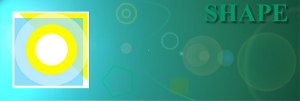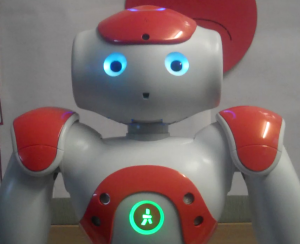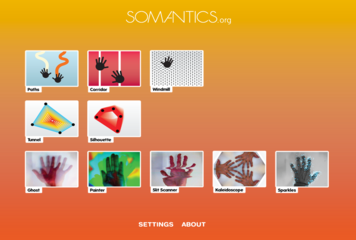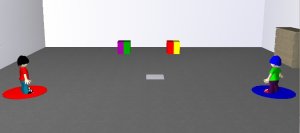Three weeks ago Anthony Rhys at Trinity Fields School, did us a huge favour, contacting Dr Wendy Keay-Bright, Reader of Inclusive Design at Cardiff School of Art and Design, suggesting my colleague James Winchester and I would be interested in attending the ESRC Festival of Social Science 2012, to be held this year at Topcliffe Primary School in Birmingham. This week we headed off to the midlands and had the opportunity to witness first hand, some of the interactive and collaborative technologies being developed and prototyped as tools for enhancing learning opportunities and social communication for students with Autistic Spectrum Condition or ASC. Most children with ASC find that working with computers is “safe”, finding it easier to engage with and be motivated by the technology rather than interaction with another potentially unpredictable or judgmental individual. This belief born out of our own experiences perhaps underpinned our interest in one of the most anticipated projects we wanted to see, which was the NAO Robot from Aldebaran Robotics, a french company specialising in humanoid robots, which have found a place in a few classrooms.
NAO (pronounced “now”) delivered an impressive opening speech, they are cute, likeable and have that wow factor that has led to most news coverage of the event concentrating on them, which is a shame, as much as I liked them and my own children love them, there were some equally impressive projects on show at the exhibition.
Echoes is a fascinating project and we had an opportunity to discuss how the use of Echoes could benefit young people with ASC, with Kaska Porayska-Pomsta one of the project leaders. We both felt it was more impressive than its shinier robotic partner and we were able to see instantly how playing in this virtual garden with Andy, the autonomous agent Kaska introduced to us, would deliver incredible benefits to some of our students. Echoes is a technology enhanced learning experience, where young people with ASC can explore in a virtual learning environment by interacting with Andy an intelligent virtual character. Andy encourages exploration and provides opportunities for social communication in a virtual magical garden and during some hands on time with the software I was able to sort and move flower pots, collect items, throw a bouncing ball, shake rain clouds to create raindrops that allowed me to grow flowers and burst bubbles, all with Andy’s encouragement. Andy could helpfully look at items to prompt further interaction and sign to me using Makaton, even when we tried to be unhelpful by playfully soaking Andy with a rain cloud, we weren’t scolded or corrected, instead Andy continued to provide prompts to other areas of interest and opportunities that would create a more positive result from our interaction.
Kaska was keen to impress that future options for Echoes would employ motion tracking technology, via an inexpensive Microsoft Kinect option and that eyegaze assistive technology was also a possible development path that was being explored, and one which we felt would increase the level of accessibility of this project for individuals in our own school, who were not able to access it via a touchscreen. This is an exciting project and one we hope to be able to participate in and follow with interest in the future. I felt this project could really make a difference in enabling interaction and opportunities for communication in young people with ASC, there is a link to the Echoes project at the bottom of the page.
I have an obsession with visual interactions and have always been impressed by the Somantics and ReacTickles applications, Anthony Rhys has covered Somantics at KinectSen Wiki, it is an awesome application of ten simple but beautifully engaging interactions using the Microsoft Kinect hardware, designed by Dr Wendy Keay-Bright.
We got a chance to speak to Wendy, who also introduced us to Marek Bereza, one of the co-producers of the project and interaction designer. Somantics is open-source, the source code is available for download from the HellicarAndLewis Git Hub repository and is therefore freely available should you wish to download it, or attempt to alter or create your own mini applications for it. Marek offered some good advice for anyone wishing to code this type of application, whether in openFrameworks or in Processing which was to keep them simple, keep writing them, even when things don’t quite work out as planned and to consider releasing the source-code to the open community, so that others benefit and can share in your work, which is a concept I have touched on in other posts. A link to Marek’s work is included below. I really recommend Somantics and if you are interested in further information on the project then please follow the link to the Somantics project website below.
ReacTickles Magic is software I immediately feel at home with, there is no predefined goal or objective in using it until the person interacts with it.
The interaction is through the experiential interface, which can be a touchpad, interactive whiteboard, keyboard, mouse and Pc, smart table or tablet. ReacTickles is a platform purely driven by the user to trigger curiosity through experimentation and provide a positive emotional experience through interaction with simple objects and colours designed to stimulate. It has been created by the same team behind Somantics and in keeping with the philosophy on that project, ReacTickles is available for free download.
COSPATIAL was the last project we had the chance to discuss and it is this project that has interested our colleagues since our return from the exhibition. Unfortunately we weren’t able to see the project running in a demonstration but Dr Sarah Parsons, one of the UK team members, kindly took the time to discuss the project with us. COSPATIAL encourages communication and collaboration for young people with ASC using existing classroom technologies to engage students in learning social skills. This is achieved by focussing on the creation of either shared active surfaces or collaborative virtual environments to encourage working together on completing specific tasks, promoting turn-taking, sharing and social communication, which young people with ASC find particularly difficult.
The project has been supported by the Seventh Framework Programme of the European Commission which provides funding for projects which seek to improve human health, tackle environmental issues or lead research into the use of innovative technologies to promote understanding and learning as well as solutions to challenges we face in modern multicultural societies.
The collaborative virtual environment allows several users to interact in a shared virtual space which permits practise of social skills such as communication in a safe environment. In talking to some colleagues they are particularly interested in looking into the use of this project with some of our ASC students, as this focusses on creating a collaborative environment, rather than individual interaction or experimentation.
It was a long but worthwhile journey which enabled us to see some of the projects being used by students and to discuss the practical application of these ideas as tools to facilitate engagement and social communication in the classroom, as well as provide us with the rare opportunity to discuss the projects with the research and development teams behind them. Every credit should go to Dr Karen Guldberg, who is principal investigator on the SHAPE project, which is investigating how Technology Enhanced Learning (TEL) can offer significant benefits for children on the autism spectrum and how these technologies can be used for children with ASC in the classroom to effect positive outcomes in learning and social communication.
It was a fantastic day and despite unfortunately not being able to thank Ian Lowe the Head Teacher at Topcliffe Primary School, his teaching staff made us feel very welcome, the students we met were a credit to his school and yes the NAO robots were cool.
Links:
- NAO – Aldebaran Robotics
- Echoes
- Somantics
- Marek Bereza
- ReacTickles
- COSPATIAL
- SHAPE Project at the University of Birmingham
- Topcliffe Primary School – Castle Vale, Birmingham





Pingback: Using Innovative Technologies in the Classroom – Big Trak « SEN Classroom
Pingback: Using Innovative Technologies in the Classroom – COSPATIAL Project « SEN Classroom
Pingback: Using innovative technologies in the classroom – The Echoes Project « SEN Classroom
Pingback: The SHAPE Project, technologies to enhance learning for young people on the Autism Spectrum | One Change a Day
Reblogged this on Manajemen Keluarga .